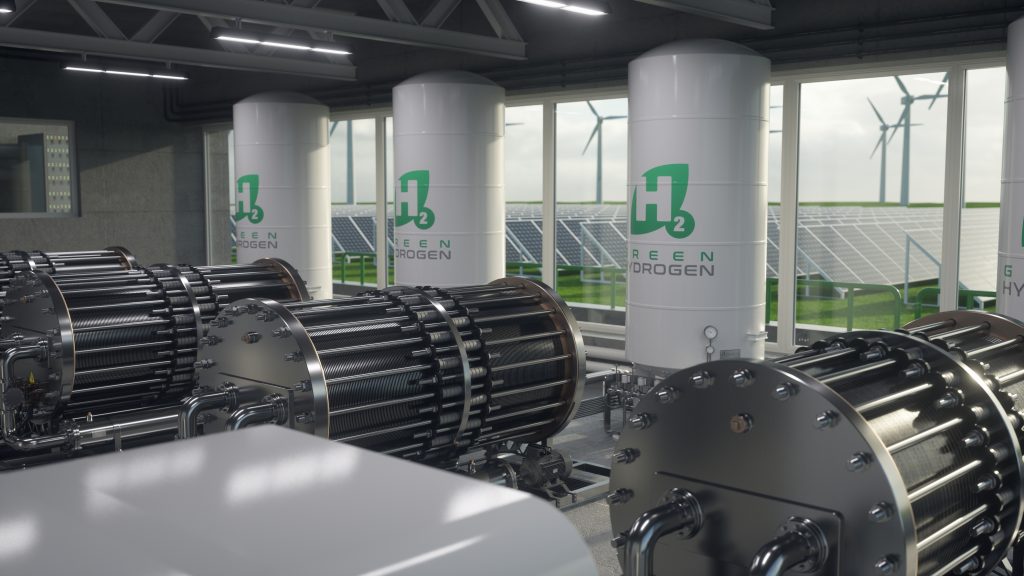Key technologies for the energy transition
Green hydrogen is a climate-neutral energy carrier with a high energy density – and therefore essential for the sustainable storage and use of electricity from renewable energy sources.
In Germany, wind and solar power plants still often have to be curtailed when there is high electricity production from wind and sun. In countries such as Morocco, where wind and sun are available in abundance, the enormous energy potential cannot simply be made available directly to industrialized countries.
The solution: electrolysis can be used to convert surplus electricity from renewable sources into CO₂-free hydrogen – a storable and transportable molecule with a wide range of applications.
This green hydrogen can be used as an energy source or directly replace fossil fuels in energy-intensive industries such as steel, glass, paper or cement – emission-free and future-proof.
As the lightest element, hydrogen can be transported efficiently via pipelines. Alternatively, it can be converted on site into storable and exportable derivatives such as ammonia or methanol – a process known as Power-to-X (PtX), which forms the basis for fossil-free industry and mobility.

